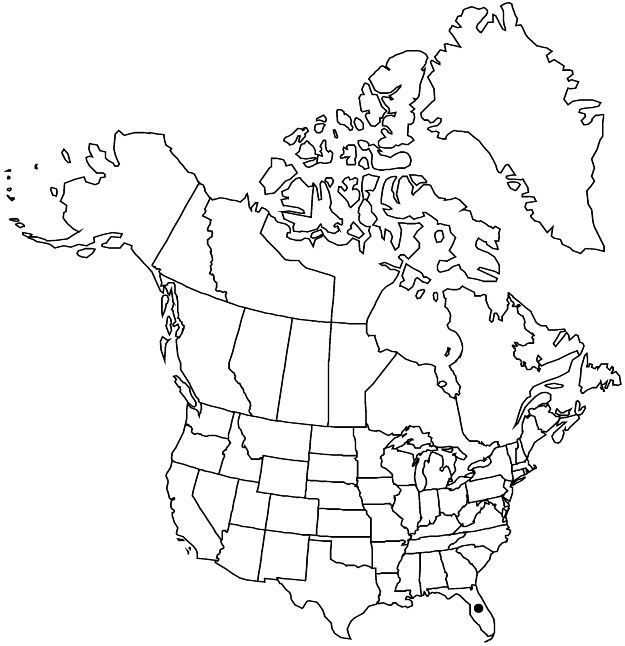Difference between revisions of "Sida planicaulis"
Diss. 1: 24, plate 3, fig. 11. 1785.
FNA>Volume Importer |
FNA>Volume Importer |
(No difference)
| |
Revision as of 20:16, 24 September 2019
Herbs or subshrubs, perennial, branches distichous, planar, 0.3–1 m. Stems erect, with simple 1–2 mm hairs, sometimes also minutely stellate-hairy. Leaves distichous; stipules free from petiole, subfalcate, 4–10 × 0.5–1 mm or less, often exceeding petiole, margins ciliate; petiole 5–6 mm, 1/15–1/5 blade length, hirsute; blade elliptic-lanceolate, 2.5–9 × 1–4 cm, 2 times longer than wide, base rounded, margins short-serrate at least distally, entire basally, apex acute, surfaces glabrous or with minute scattered stellate hairs and simple appressed antrorse hairs. Inflorescences axillary congested glomerules, sometimes solitary or paired flowers. Pedicels 0.3–0.5 cm, subequal to or shorter than subtending petiole, shorter than to subequal to calyx. Flowers: calyx ribbed, 5–6 mm, often ciliate, with scattered minute stellate hairs, lobes triangular; petals yellow, 8–10 mm; staminal column glabrous; style 7- or 8-branched. Schizocarps subconic, 6–7 mm diam., glabrous or axially minutely puberulent; mericarps 7 or 8, 3 mm, smooth dorsally, laterally somewhat reticulate, apex spined, spines 2 mm, apically minutely puberulent. 2n = 28.
Phenology: Flowering year-round.
Habitat: Disturbed sites
Elevation: 10–100 m
Distribution

Fla., South America (Brazil), introduced also in Indian Ocean Islands (Mauritius), Pacific Islands (Hawaii, Tubuai Islands).
Discussion
Sida planicaulis is weedy and thought to have originated in Brazil, where it is quite common.
Sida planicaulis was first reported from south-central Florida (Glades, Highlands, Okeechobee, Osceola, and Polk counties) by K. R. DeLaney (2010) as new to North America; it has been reported (as S. acuta) also from New Jersey and Pennsylvania on ballast as a waif.
Selected References
None.